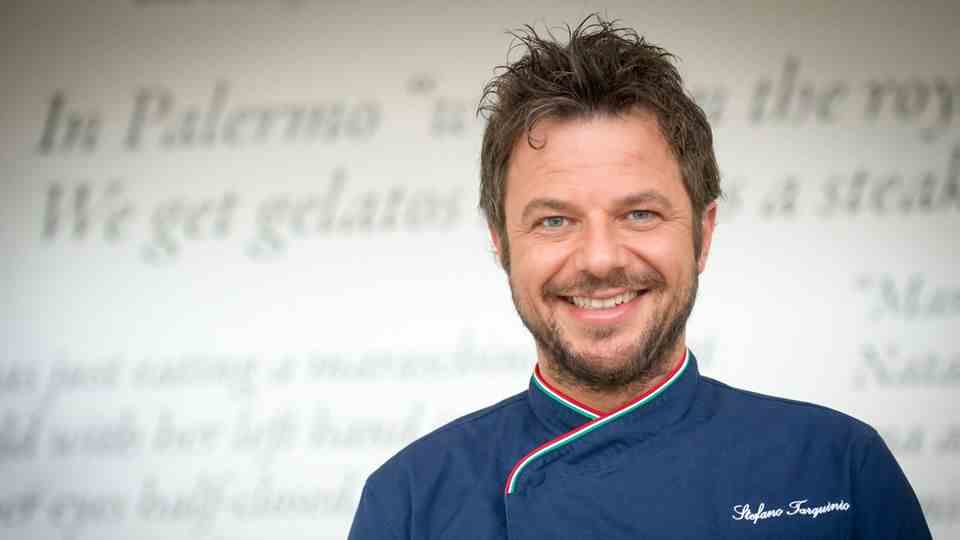At the Ice Cream University in Bologna, “Maestro del Gelato” like Stefano Tarquino teach the art of the frosty dessert. He knows which flavor to eat if you want to test the skills of the ice cream maker and which flavor unites the world.
Whether black ice cream with activated charcoal or rosemary-lavender flavor, new varieties are constantly being developed. Mr. Tarquinio, which ones can’t we avoid this summer?
Flower or tea ice cream such as elderberry, matcha or chai. The innovations also include many classic flavors that are interpreted in a modern way. For example, stracciatella with chocolate sprinkles instead of just melted chocolate, or cassata with tangerines instead of oranges and lemons. Alternatives are also taking up more and more space with a view to food intolerance, i.e. ice cream without dairy products or without added sugar.
It is well known that there is no arguing about taste. Still, the heretical question: which flavor do you think should never have made it into the waffle?
Ice cream is the product of the creativity of the ice cream parlors, so all varieties have a right to exist. But that doesn’t mean everyone is automatically good or successful. Personally, I don’t like flavors that are too extreme. So those that work as a small sample on the plate, but I couldn’t eat a whole bowl of them. And also none that are too sugary or in which an excessive number of ingredients are combined. Less is more!

Stefano Tarquinio is Senior Instructor at Carpigiani Gelato University.
© Carpigiani Gelato University
Are there any ingredients that ice cream makers should stay away from anyway?
I’ve eaten ice cream all over the world and tasted some truly unique flavors – avocado gelato with dried Asian crickets, goat cheese ice cream with dates and bacon, ice cream with anchovies and white chocolate. Ice cream can be made with virtually any ingredient! And I don’t think there’s anything that should be banned when we’re talking about tastes, because taste preferences really do vary from culture to culture. For example, salted liquorice, which is very popular in Sweden, might not go over so well in Italy.
Is there a type of ice cream that even laypeople can taste and see if the ice cream maker is really a master of his trade or just a foam whipper?
To test the quality of an ice cream parlor and the skills of the ice cream maker, I would go for simple – or rather seemingly simple – flavors. A taste as seemingly trivial as fior di latte can in fact have many pitfalls: it can be too sweet, have notes of cooked milk, make the palate feel excessively cold, be watery, and so on. In general, I would say that simple flavors like fior di latte are always good indicators.
Why?
Because it’s so easy, there’s no room for error. For the more experienced and curious, we have developed an Ice Cream Sensory Analysis course at Gelato University, which teaches you how to taste artisanal gelato with parameters similar to those of a wine tasting.
You teach at the Ice University in Bologna. How long does it take to make a perfect ice cream?
During the three-week basic training with us, the students achieve a remarkable level of theoretical and practical knowledge. I then tasted some really good ice cream flavors from some of them, which they developed and made entirely themselves. This knowledge can be expanded in the in-depth courses. There it is then about more complex varieties such as vegan gelato or ice cream with no added sugar as well as special flavors, for example with Asian ingredients. Of course, in order to reach the level of a “master”, you need a few years of experience in this field in addition to the training.
All but three types of ice cream are to be destroyed. Which ones do you save?
That’s a tough question because everyone has their own favorite strains! For me it’s these three: 1. Crema, like we do in Bologna, my hometown. 2. Gianduia or Bacio because chocolate and hazelnut is one of the best combinations in the world. And 3. Ricotta or Cassata because I love ricotta.
And which should really everyone have tasted once in their life?
A lifetime would not be enough to try all the amazing flavors made by ice cream makers around the world! The selection varies not only from country to country, but also from city to city: in Bologna you cannot miss the crema alla bolognese, it is very rich in egg yolk. And in Turin, the Gianduia made with local hazelnuts, while in Palermo the citrus and almond sorbets are a must-try. However, if there is one flavor that brings everyone, or almost everyone, together on a global scale, it is pistachio. In my travels, I’ve found that anyone who says “I don’t like pistachio ice cream” only does so because he or she has never tried a good one. As soon as people taste a properly made pistachio ice cream, their eyes light up!
Italy or not – Hand on heart: where is the best ice cream in the world?
Speaking of competitions, in December 2021, after four years of selection and 3500 participating ice cream makers from all over the world, the first place in the Gelato Festival World Masters went to Adam Fazekas from Hungary, who runs an ice cream parlor in Budapest. But in general I would say that Italy is absolutely ahead for the raw materials that are the envy of the whole world, the gastronomic culture that is part of our DNA and the know-how in this field. And as shown in the Carpigiani Gelato Museum, ice cream as we know it today was invented at the court of Caterina de’ Medici in Florence by the architect Bernardo Buontalenti. So it’s really part of our story.



